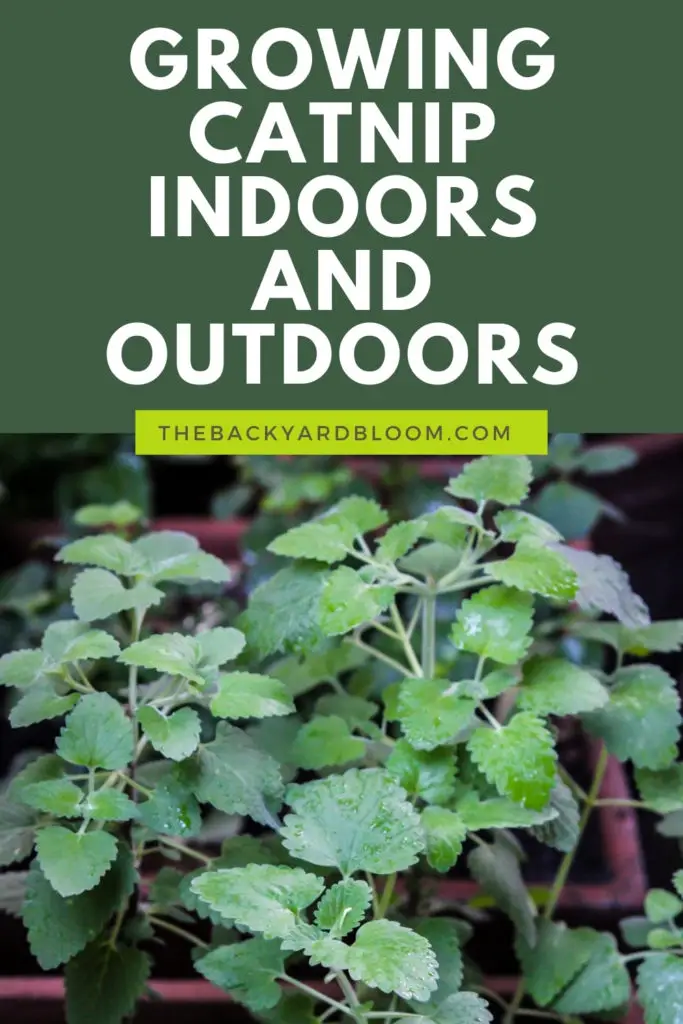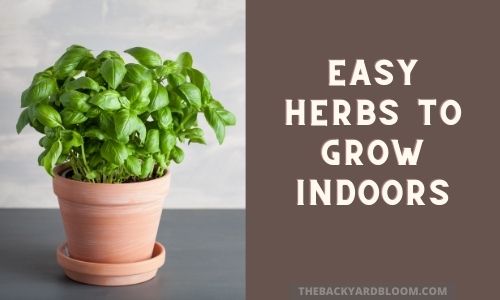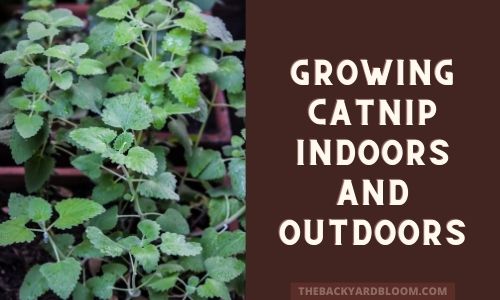Please note that this post may contain affiliate links. You can read my full affiliate disclosure at the bottom of the page.
Catnip is another easy to grow herb that can thrive no matter if you are growing catnip indoors and outdoors.
It is a perennial, so you won’t have to keep replanting catnip. And it can be a great asset to your garden. It can also be a great plant to grow indoors to keep bugs away.
Catnip is a member of the mint family. So if you are good at growing mint, you’ll be great at growing catnip.
Why Should You Grow Catnip?
- Cats Love Catnip
- It Can Have A Calming Effect On Humans
- Catnip Can Help Headaches
- Insect Control In The Garden
Of course, the number one reason that growing catnip outside in your garden, or inside on a windowsill is because you want some of that good stuff for your cat. One of the biggest benefits of growing your own catnip is that you can be sure that you can give your cat chemical-free catnip. If you’re growing it, you know what you’re putting on it.
In addition to being a favorite choice of herbs for cats, catnip is also used medicinally and in the kitchen for humans too. In humans, catnip can have a sedative and calming effect.
It has also been used for treating headaches and help with nausea.
Using catnip in companion planting can help attract the right insects and get rid of the pests.

Growing Catnip Outdoors from Seed
When growing catnip from seed it is usually best to start your seeds indoors first. Usually, you will want to start these out around February or March. You can then transplant your catnip in April and May to your garden.
If you don’t want to start growing your catnip from seed you can always pick up a small catnip plant from your local garden center.
When sowing catnip seeds indoors you’ll want to make sure you have the following supplies:
Catnip seedlings germinate faster with a heat mat heating the soil. Also, seedling heat mats are good if you are putting your seedlings in a cooler area of the house like the garage or a room you don’t use much.
If you don’t want to start your catnip growing indoors you still can grow catnip from seed outside. When sowing catnip seeds outside it’s best to sow seeds in the fall or spring where you are going to be growing the catnip.
Where to Plant Catnip Outside
When growing catnip outside you can put it just about anywhere you want. It does have an odor to the plant, some people say it’s a skunk-like odor, so make sure where you plant it isn’t somewhere you sit beside often. You might be disappointed with the spot you picked for the plant if you don’t like the smell.
Catnip grows great directly in the garden, in raised beds, or in containers. So it doesn’t matter if you have a backyard garden or an urban container garden you can grow catnip easily.
Soil
Catnip grows best in soil that drains well. But it is a more forgiving herb when it comes to growing in soil that isn’t the best.
If you are using a pot to grow your catnip make sure you have a good quality potting soil mix.
Sunlight
Catnip does best with full sun throughout the day, but it can also grow in partial sunlight.
Water
When growing catnip, if it’s outside you won’t need too much beyond rain.
If you are having a dry spell and your catnip plant is starting to look droopy then go ahead and water it.
Using Catnip for Companion Planting
Using catnip in your garden as a companion plant can help out your other garden plants and vegetables.
The best plants to plant with catnip when using companion planting are:
- Beets
- Green Beans
- Squash
- Pumpkins
- Zucchini
- Winter Squash
- Tomatoes
- Collards
- Cabbage
- Broccoli
- Potatoes
- Cauliflower
- Radishes
- Hyssop
Rodents like rats, weevils, and mice don’t like catnip and it can help keep them out of your garden. In addition to rodents, catnip also helps with keeping other bugs away like ants, squash bugs, and aphids.
In addition to repelling the bad bugs, planting and growing catnip in your garden can help attract bees and other pollinators.
By using catnip along the border of your garden beds you may be able to help distract cats with the catnip so they don’t venture all the way into your garden and dig around. I know I have used it along the border of my garden and looked out to see the neighbor’s cat rolling around on the catnip instead of messing with my other vegetables growing there.
Keeping Catnip From Getting Out of Control
Catnip is like mint, in that it can grow like crazy and be quite invasive. So you will have to stay vigilant if you have planted it directly in the garden.
Catnip plants spread easily by their seeds. So when it flowers you will want to remove them before they go to seed in order to keep catnip from spreading everywhere in your garden.
Growing Catnip Indoors
Many cat owners wonder if you can grow catnip indoors. Yes, you can grow catnip indoors.
Catnip is easy to grow indoors even from seed.
If you are starting your catnip from seed, just follow the sowing guidelines for catnip listed above.
But instead of transplanting your seedlings outside you will transplant them into a small pot inside.
You will want to make sure to use a good quality potting soil and have a pot that allows the soil to drain well. If the soil doesn’t drain well enough it can cause root rot to develop and that will kill your catnip plant.
You will want to place your pot of catnip in a very sunny spot, a southern facing window is usually best so it can get the most sun during the day.
Also, be sure to cut off flowers on catnip growing indoors. By cutting off the flowers you will encourage the plant to keep growing further.
Harvesting Catnip
No matter if you chose to grow your catnip inside or outside, there is going to come a time where you’ll want to use that catnip.
Just cut off however much catnip you need and let the plant continue to grow.
You can use the catnip leaves fresh or hang them to dry so you can use them later.
Sometimes when using catnip for your cat, some cats prefer dried catnip to fresh. So try it out both ways on your cat if that is who you are growing the catnip for.



